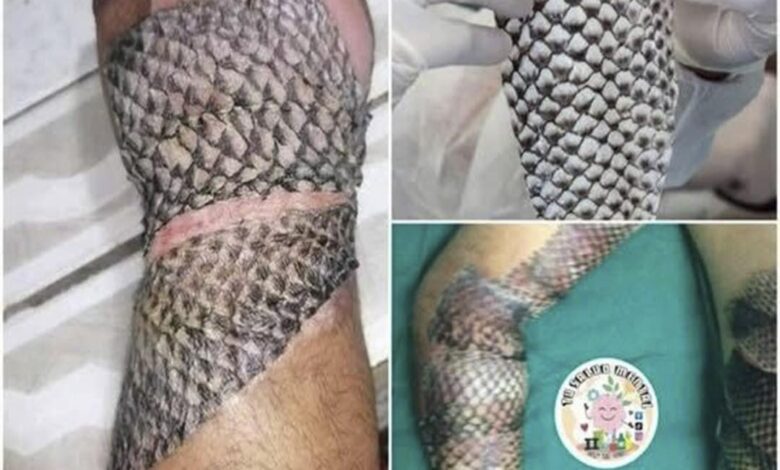ery medical revolution begins in a high-tech laboratory or with a billion-dollar budget.
Sometimes, the most profound breakthroughs come quietly, from nature itself — simple, unexpected, and transformative.
In Brazil, a team of visionary scientists discovered that the key to faster, more affordable burn recovery wasn’t hidden in a pharmaceutical vault but swimming in local rivers. Their unlikely hero? The humble tilapia fish — a resource once discarded, now changing lives across the world.
For decades, treating burn victims has relied on expensive synthetic bandages and skin grafts — essential for protecting wounds and promoting healing.
Yet in many hospitals, especially in developing countries, these materials are often unavailable. Faced with this challenge, Brazilian researchers sought an alternative that was both effective and affordable. Their search led them to an overlooked treasure: tilapia skin.
What was once considered waste turned out to be biologically extraordinary. Under the microscope, tilapia skin revealed an abundance of collagen types I and III — the same proteins that give human skin its strength and elasticity. Structurally, it mirrored human tissue almost perfectly, making it a natural, biocompatible substitute for burn dressings.
The preparation process was meticulous. Each piece of fish skin was sterilized, disinfected, and treated with glycerol to remain safe and moist. When applied to a burn, it adheres like a second layer of skin, sealing the wound, locking in crucial moisture, and reducing pain — all key factors for faster recovery.

The results were astonishing. Patients reported immediate pain relief and faster healing compared to traditional treatments. The natural collagen promoted tissue regeneration, while the protective covering reduced infection risks and minimized the need for frequent, painful bandage changes.
Dr. Edmar Maciel, one of the pioneering surgeons behind the research, described it best:
“Tilapia skin acts as a biological dressing. It protects, regenerates, and simplifies care — all while costing a fraction of conventional materials.”
For patients, the difference was life-changing. Traditional burn treatments often involve repeated dressing changes that are physically and emotionally exhausting. With tilapia skin, dressings stay in place for days — sometimes weeks — allowing patients to rest and heal in peace.
Maria Silva, a 29-year-old woman with second-degree burns on her legs, recalled the experience:
“The pain was unbearable. But when they applied the tilapia skin, relief was instant. I could finally sleep. I never imagined something so simple could save me.”
The research team ensured their methods met rigorous medical and ethical standards, proving through clinical trials that tilapia skin is safe, sterile, and compatible with human tissue. Beyond the health benefits, it also dramatically reduced hospital costs and expanded access to high-quality burn care for low-income patients.
Word spread quickly. Hospitals and health ministries across Latin America, Africa, and Asia began exploring the method. What started as a local initiative in Brazil became a global inspiration, proving that healing doesn’t have to come with a high price tag.
Today, scientists are testing tilapia skin for other medical applications, including diabetic ulcers, chronic wounds, and post-surgical recovery. Early results are promising, hinting at a future where natural materials could replace synthetic ones entirely.
For the Brazilian researchers, the discovery was more than a medical victory — it was a human one. “We wanted to create something that gives dignity to healing,” one scientist explained. “No one should suffer simply because they can’t afford to get better.”
From an environmental perspective, the innovation is equally revolutionary. It turns discarded fish waste into a sustainable medical resource, marrying science with ecological responsibility — a perfect example of circular innovation, where nothing is wasted, and everything has value.
💞 Conclusion:
The story of tilapia skin is more than a scientific breakthrough — it’s a testament to ingenuity, compassion, and the power of seeing potential where others see none. What began in a Brazilian lab has grown into a movement reshaping global healthcare.
In a world obsessed with high-tech solutions, this discovery reminds us that sometimes, the most extraordinary miracles come from the simplest sources. A fish once thrown away now heals the wounded, restores hope, and proves a timeless truth: nature, when respected and understood, remains humanity’s greatest healer.
